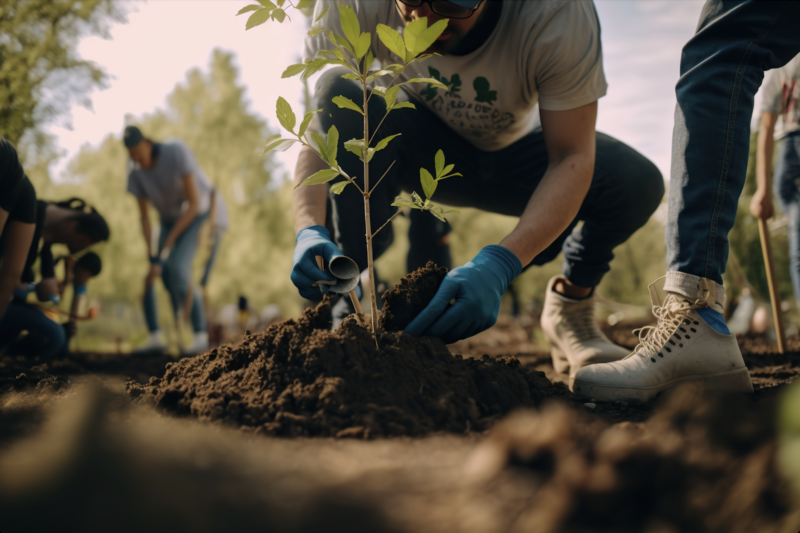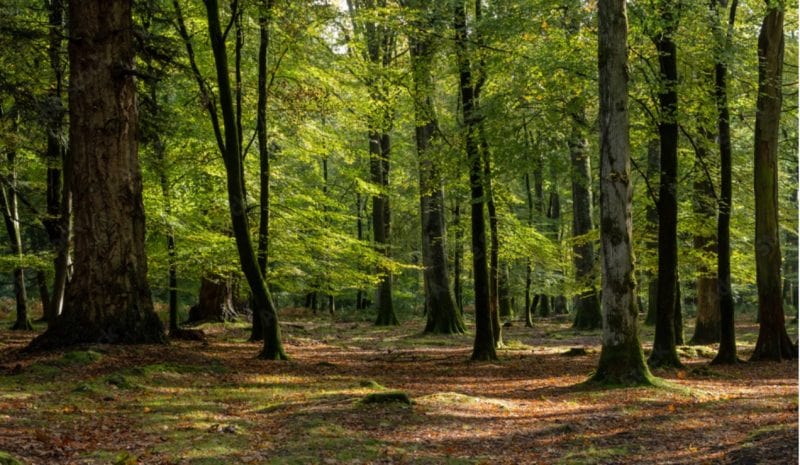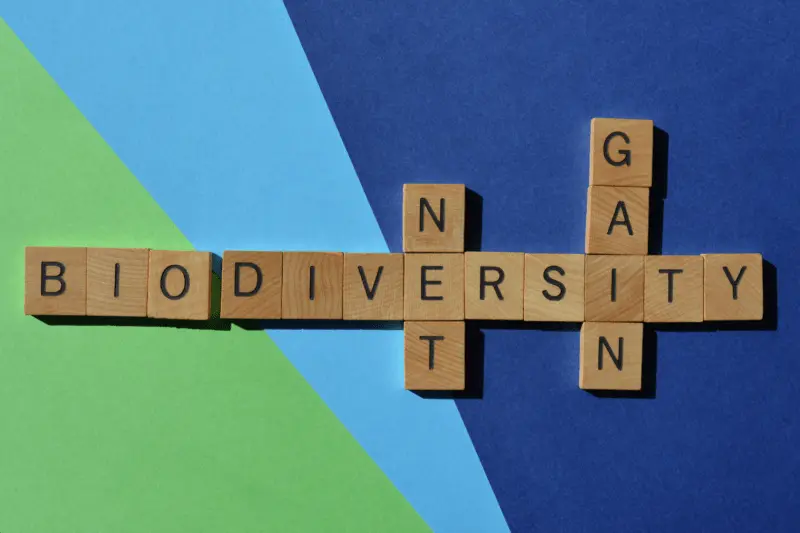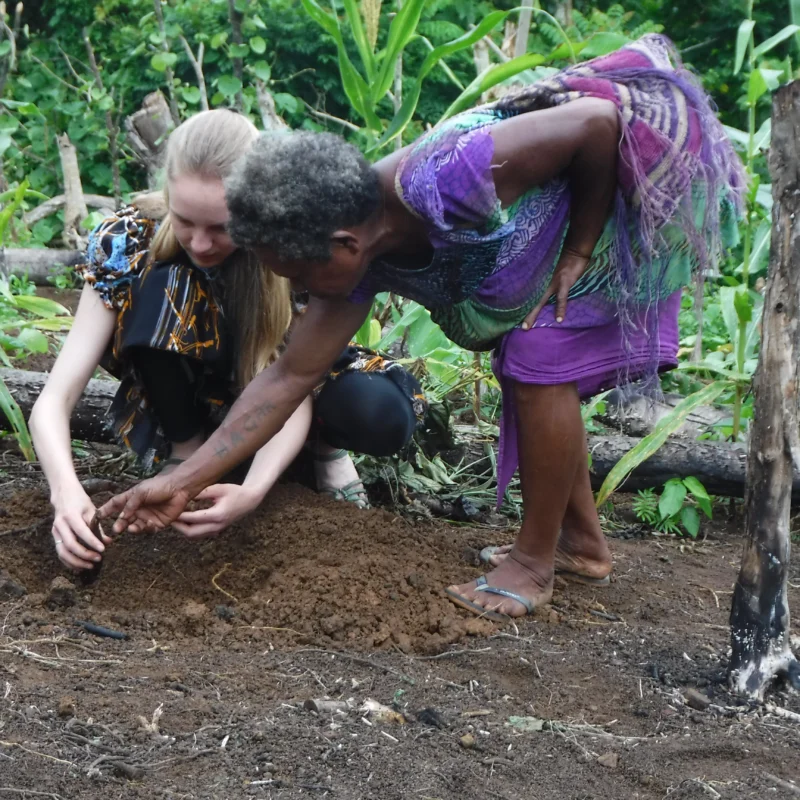Since the turn of the century, technological advances have given us the opportunity to do things that would have seemed unimaginable 50 years ago, including in the environmental space. We have developed efficient wind turbines, solar panels, electric vehicles, as well as animal trackers, satellite imagery and AI-powered data analysis.
A relatively small amount of materials are integral for these technologies and are often referred to as ‘technology-critical elements’ (TCEs).
Whilst these technologies have obvious application benefits and will be crucial in helping biodiversity in the future, there is a key consideration that is often overlooked. Where do the TCEs for these technologies come from? And what impact does sourcing these have on biodiversity?
In this blog, we will be discussing some of the largest impacts that mining for TCEs can have on nature and how they can be mitigated.
Why should we put mining under the proverbial microscope?
Mining TCEs have the potential to have a substantial negative impact on wildlife and their habitats. These impacts are often overlooked by technology companies assessing their own biodiversity footprint, with more attention paid to downstream impacts than upstream.
Roughly 20% of global mines are located in biodiversity hotspots, such as the Congo and Amazon basins, with 79% of global metal ore extraction in 2019 coming from five of the six most species-rich biomes. Mining volumes have doubled since 2000 in tropical moist forest ecosystems and up to 300m2 of vegetation and topsoil is removed and 1000 tonnes of contaminated wastewater generated for every tonne of rare earth oxide extracted. Customer demand for technological products will continue to increase and we need to ensure this does not come at the expense of biodiversity.
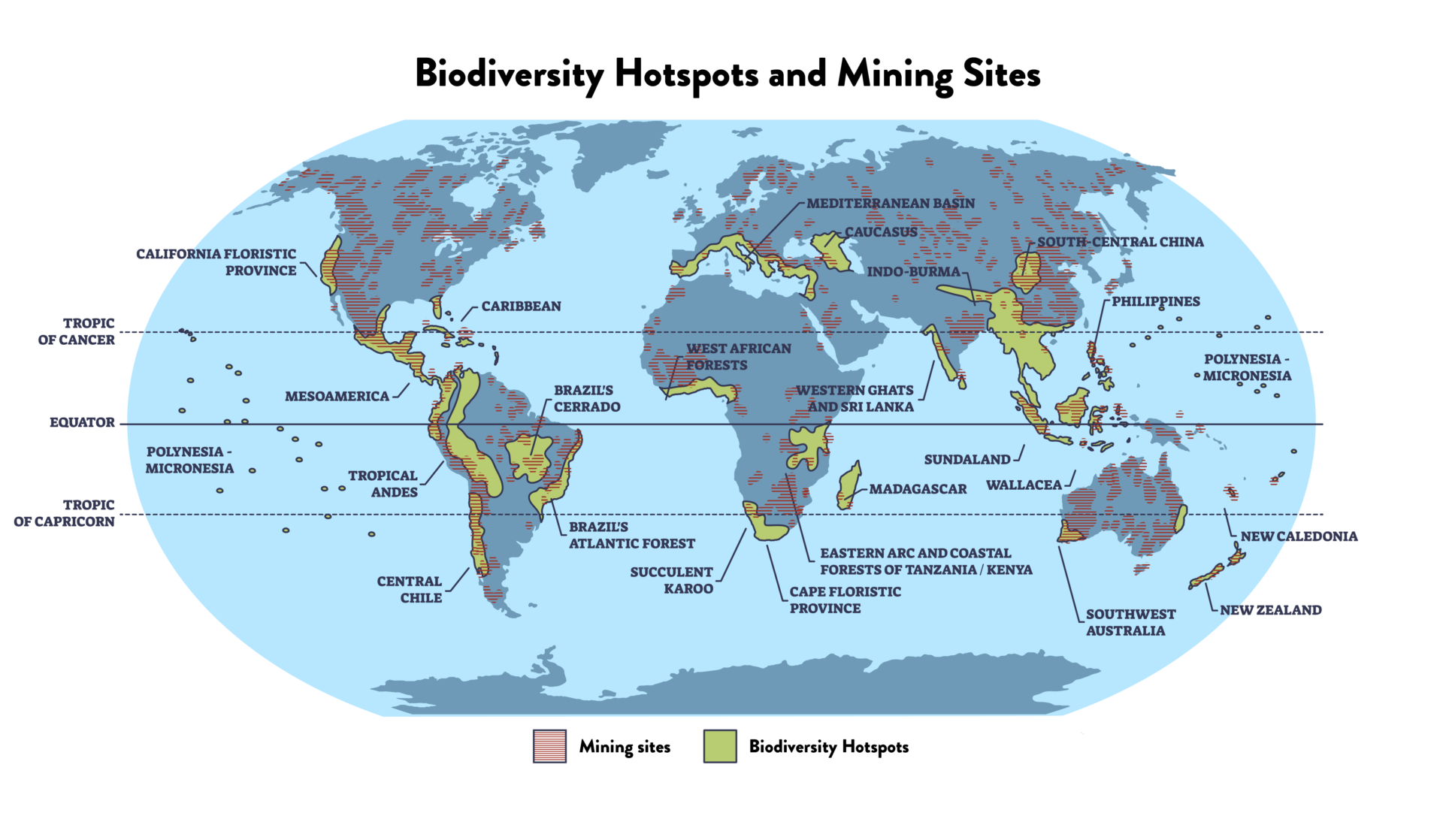
Top 5 ways mining impacts nature and what we can do about it
1. Habitat Destruction
Land use change is the biggest driver of terrestrial biodiversity loss globally and mining can drive this change. Mining often involves the removal of vegetation and topsoil, leading to the fragmentation and destruction of habitats for various plant and animal species. Habitat loss caused by a single mine can negatively affect multiple species, sometimes threatening extinction to species that live in specific habitats and those with narrow ranges.
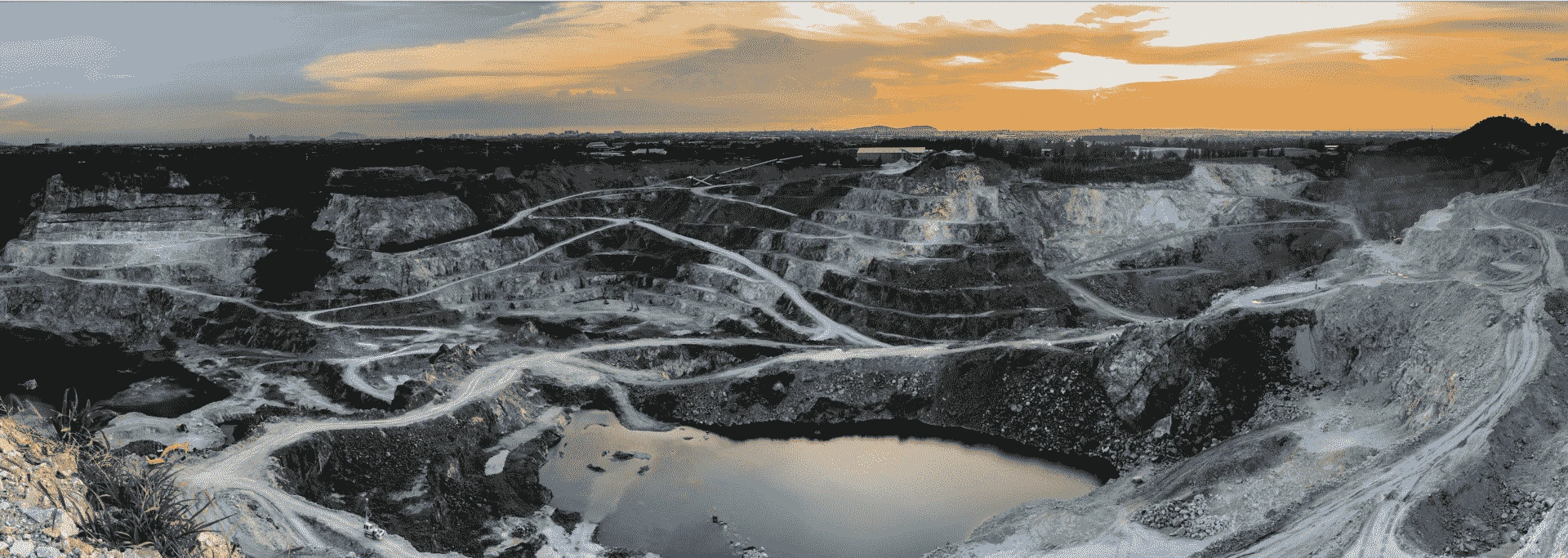
To address this, strict environmental regulations and monitoring systems should be implemented to ensure responsible mining practices. Mining companies should also adopt sustainable mining techniques like land reclamation and restoration, which involve rehabilitating affected areas and promoting habitat recovery.
An interesting approach is the use of biosolids to replenish depleted topsoil. Properly maintained soil with biosolids can foster vegetation that prevents further soil erosion. Large-scale reforestation schemes can also be implemented to restore the local species present at a mine site before operations begin.
There are more innovative mitigatory techniques that can be applied too, including bioleaching. This is the biological conversion of an insoluble metallic compound into a water soluble form, thereby retrieving metals from both e-waste and mining waste and reducing the need to mine raw materials.
2. Soil and Water Contamination
Mining activities can release pollutants into the soil and water, such as heavy metals, acids, and other chemicals. These contaminants can directly enter or leach into nearby water bodies, impacting water quality and aquatic ecosystems, potentially harming aquatic organisms and disrupting entire food chains. Soil contamination can also hinder the growth of plants and disrupt the soil food web.
Effective on-site waste management systems are crucial to prevent the release of mining by-products. Sedimentation ponds and the planting of trees and vegetation can also help control erosion and filter contaminants before they reach water bodies. Another fascinating technique is phytomining, which involves planting metal-accumulating plants in metal-rich areas to extract high-value metals or metalloids.
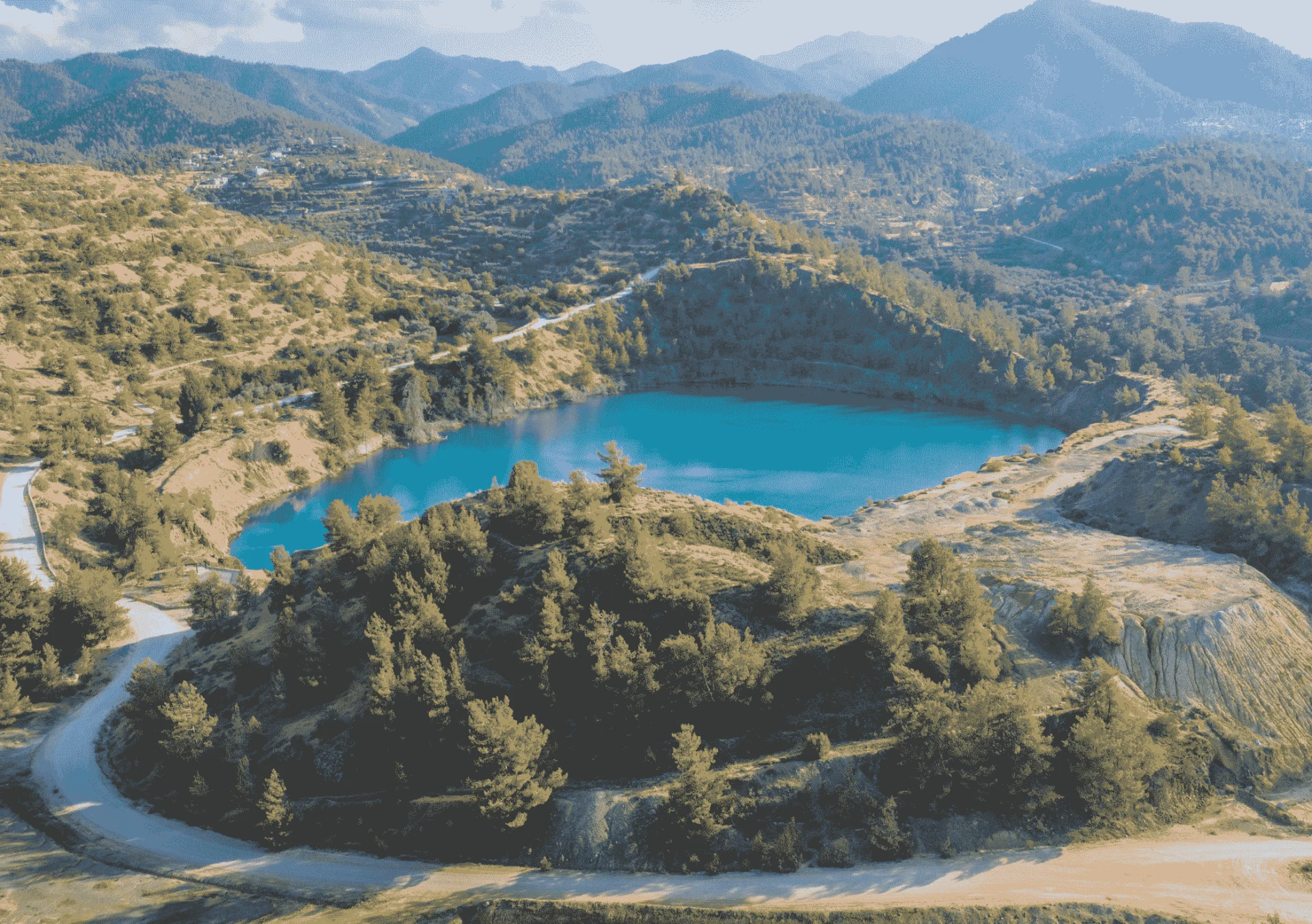
3. Changes in Hydrology:
Extracting large amounts of freshwater to excavate TCEs can cause changes in and disrupt natural drainage patterns, altering water flows and causing erosion. These changes can lead to the loss of wetlands, streams, and other critical water bodies and can have profound effects on aquatic organisms, including the loss of breeding grounds and disruptions in migration patterns.
Incorporating sustainable water management practices and efficiently using water through water control and recycling, use of wastewater, restoring natural drainage patterns and use of real time calculations can help predict and manage actual water needs whilst reducing the disruption to aquatic ecosystems.
4. Air Pollution
Dust and particulate matter can be released into the air, especially in open-pit mining, blasting operations and transport. This can have adverse effects on both terrestrial and aquatic ecosystems, leading to respiratory problems in humans and animals and altering vegetation composition. Additionally, the release of gases and fumes from mining operations, such as sulfur dioxide and nitrogen oxides, can contribute to acid rain, further degrading ecosystems.
Implementing dust suppression measures, such as covering storage areas and using water sprays during excavation and transportation, can help reduce air pollution. Proper ventilation systems and emission control technologies can also be employed to reduce the release of harmful gases and particulate matter.
Replacing diesel engines with electric engines where possible can significantly reduce the amount of carbon dioxide produced by a mine’s vehicle fleet. Businesses wanting to become more sustainable could also upgrade to more advanced, durable equipment that lasts longer, reducing the turnover of machinery thereby decreasing the resources needed. Improved durability can also reduce the environmental costs of damaged equipment — like rubber or plastic being shed as a piece of equipment breaks down.
5. Associated infrastructure
Mining infrastructure, such as roads, power lines, and settlements, can lead to additional habitat fragmentation and disturbances, affecting migratory routes of animals. Moreover, the influx of workers into mining areas can result in increased human activities, including deforestation, increased freshwater extraction and invasive species introductions, all of which can have adverse effects on biodiversity.
Comprehensive life cycle, environmental impact and supply chain risk assessments prior to mining operations beginning would be a good place for mining organisations to start. This ensures the upfront identification of potential risks and the implementation of appropriate mitigation strategies. Collaboration with local communities, indigenous groups, and conservation organisations can provide valuable insights and help develop plans that consider the long-term sustainability of ecosystems and biodiversity on-site and the surrounding area.
Technology companies are starting to realise that to fully understand their impacts and dependencies on nature, they must consider their supply and value chain. Whilst this is encouraging, most of the conversation is focused on downstream impacts rather than considering where their materials are actually coming from upstream.
It’s time this changes and we start to consider how we can 1) source a greater proportion of our materials from areas that are not of high biodiversity 2) mitigate the direct and indirect negative impacts from mining on nature 3) initiate a long-term transition away from those materials that negatively impact biodiversity the most 4) drive customer demand towards recycled materials and secondhand products.

A future where industry and nature harmoniously coexist
Taking the Next Step: Recognising the impacts of mining on nature is the first crucial step towards a more sustainable future. But understanding alone isn't enough. If you're eager to transform your organisations supply chain, then we are here to guide you. With our expertise, you can navigate these challenges and make proactive changes that benefit both your business and the planet.
Get in TouchNeed more details?
We are here to assist. Contact us by phone, email or via our social media channels.
Get in touch